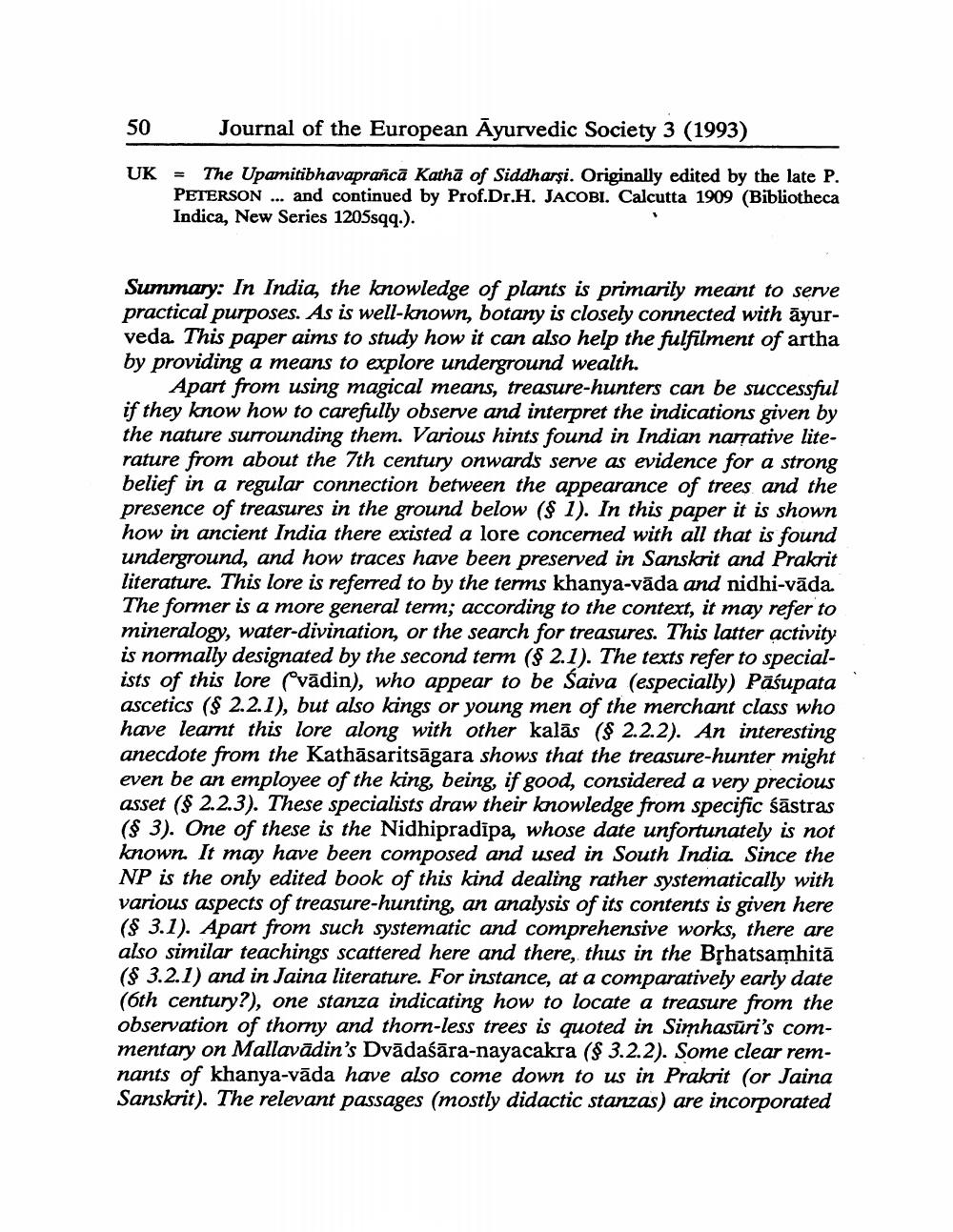________________
50
Journal of the European Ayurvedic Society 3 (1993)
UK
= The Upamitibhavaprañcā Kathā of Siddharşi. Originally edited by the late P. PETERSON ... and continued by Prof.Dr.H. JACOBI. Calcutta 1909 (Bibliotheca Indica, New Series 1205sqq.).
Summary: In India, the knowledge of plants is primarily meant to serve practical purposes. As is well-known, botany is closely connected with āyurveda. This paper aims to study how it can also help the fulfilment of artha by providing a means to explore underground wealth.
Apart from using magical means, treasure-hunters can be successful if they know how to carefully observe and interpret the indications given by the nature surrounding them. Various hints found in Indian narrative literature from about the 7th century onwards serve as evidence for a strong belief in a regular connection between the appearance of trees and the presence of treasures in the ground below ($ 1). In this paper it is shown how in ancient India there existed a lore concerned with all that is found underground, and how traces have been preserved in Sanskrit and Prakrit literature. This lore is referred to by the terms khanya-vāda and nidhi-vāda. The former is a more general term; according to the context, it may refer to mineralogy, water-divination, or the search for treasures. This latter activity is normally designated by the second term ($ 2.1). The texts refer to specialists of this lore (vādin), who appear to be Saiva (especially) Pasupata ascetics ($ 2.2.1), but also kings or young men of the merchant class who have learnt this lore along with other kalās ($ 2.2.2). An interesting anecdote from the Kathāsaritsāgara shows that the treasure-hunter might even be an employee of the king, being, if good, considered a very precious asset ($ 2.2.3). These specialists draw their knowledge from specific śāstras ($ 3). One of these is the Nidhipradipa, whose date unfortunately is not known. It may have been composed and used in South India. Since the NP is the only edited book of this kind dealing rather systematically with various aspects of treasure-hunting, an analysis of its contents is given here ($ 3.1). Apart from such systematic and comprehensive works, there are also similar teachings scattered here and there, thus in the Běhatsamhitā ($ 3.2.1) and in Jaina literature. For instance, at a comparatively early date (6th century?), one stanza indicating how to locate a treasure from the observation of thorny and thorn-less trees is quoted in Simhasūri's commentary on Mallavādin's Dvādaśāra-nayacakra ($ 3.2.2). Some clear remnants of khanya-vāda have also come down to us in Prakrit (or Jaina Sanskrit). The relevant passages (mostly didactic stanzas) are incorporated
($ 3.1). aspects of treasurer of this kind a




